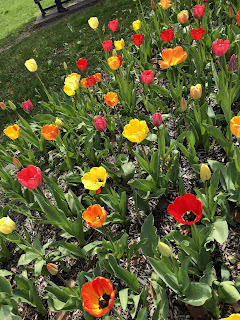I have never done a “whirlwind “ tour of any country or area I’ve visited. Instead, before taking a trip, I decide on a few places I want to see or experiences I want to have. And I wander, in part to see what most tourists won’t and to experience the “feel” of a place.
Perhaps my philosophy has been shaped by some of my trips being bike tours and by exploring places on rented bikes—as I did during my Japan trip—during other journeys.
So, before heading to the Land of the Rising Sun, I’d planned to go to Tokyo, Osaka and Kyoto. I kept to that itinerary, landing in Tokyo on the 16th of July, taking the Shinkansen to Osaka on the 20th, Kyoto on the 23rd and back to Tokyo on the 29th before flying back to JFK on the 30th.
In each city I had planned to take a guided bike tour shortly after arriving and let my choice of sites to visit and places to explore be guided by it.
I followed that plan in Tokyo: I wrote a post about the ride with Sho. I didn’t take such a tour in Osaka because no one seemed to know about them. I also didn’t look for a rental bike because I didn’t want to spend too much of my limited time pursuing it. As it turned out, Osaka was a more compact city than I’d expected. Finally, I didn’t take a guided bike tour in Kyoto because I felt strangely confident about getting around from the moment I rented my bike, shortly after arriving.
 |
| Okazaki nishitennocho Shrine |
Turns out, my confidence was justified. First of all, mountains border Kyoto on three sides and the Kamo River bisects the city. So, even without Google maps, it’s fairly easy to navigate, especially if you like to use landmarks, as I do.
Without trying, I managed to visit most of the “important “ sites: the Imperial Palace, Nijo Caske, Shimogoyo Shrine and Kinkakujicho (“Golden Palace”), among others, in Kyoto; the Castle and Dotonbori (less than a block from my hotel) in Osaka and the Imperial Palace, Shibuya and Shinjuku Gardens (again, among others) in Tokyo. But the best thing about my trip was feeling the pace, the light and even the sounds of a language I don’t understand. It was also interesting to see how people don’t so much negotiate or navigate close spaces as much as they seem to simply move among each other, as if they’ve been doing it for centuries.
Japan, at least what I experienced of it, is about as different from any other place I’ve visited or lived as any place could be. I can’t even say, after being in Cambodia, Laos and Anatolia, that I was in “another Asian country” as I could say I was in another European country when I was in Greece or the Czech Republic after having lived in France and visited Italy, Spain or Belgium.
Some of that feeling has to do with cycling and even in the bikes I rode and saw Japanese people riding. I will try to describe more in future posts.
























